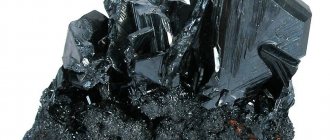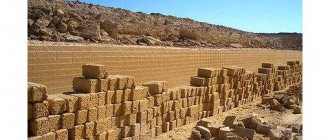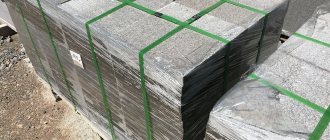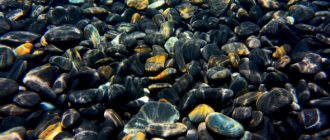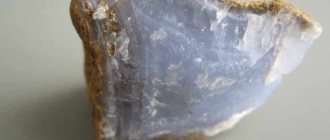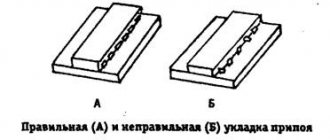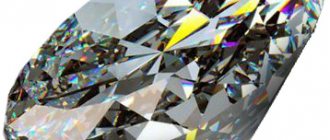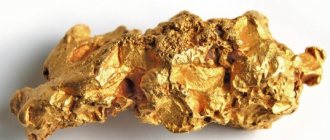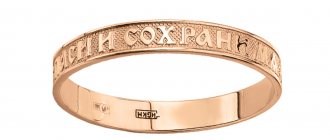Many people know that diamond is the hardest natural material in the world. Some have heard of or may have come across the concept of diamond coating or diamond heads on cutting tools. But what exactly is the concept of diamond hardness, and what does it relate to?
Diamonds
The concept of hardness and its measurement has long remained a rather controversial issue. For a very long time they could not develop a method by which it would be possible to determine the amount of this parameter. Until Mohs came up with the idea of measuring this parameter by trying to scratch one mineral with other minerals. If one of them was scratched by the others, then it was automatically assigned a lower hardness value. Taking a standard for each unit, he developed his own hardness scale with values from 1 to 10.
The hardness of a diamond was responsible for 10 points; talc became the standard for one hardness point. Another common gemstone is corundum, which is divided into rubies and sapphires and has an index of 9. Thus, this most common scale and corresponding values were fixed.
Why does diamond have such a high hardness rating? As it turns out, the chemical structure of diamond is pure carbon. The same carbon, which in its normalized state is graphite and whose hardness on the Mohs scale is equal to one.
Why then do they have such different properties if they consist of the same atom? This occurs due to chemical bonds and the structure of the crystal lattice. The carbon atoms in these two substances are connected differently to each other, which gives a different structure.
As you know, there is no material in nature that is harder than diamond. But recently, scientists have developed a synthetic substance, which, according to them, has this indicator by 58% more. This substance is called lonsdaleite. Lonsdaleite can withstand pressures that are 55 GPa greater than the hardest diamond can withstand. Its use is almost impossible due to its high cost. There is no particular need to use such material.
Which stone is more expensive than diamond?
The main criteria for the quality of an emerald are its color, and then its transparency. The ideal emerald is a transparent stone with an evenly distributed rich color. Large, defect-free emeralds of a dense tone weighing from 5 carats are valued more than diamonds.
Interesting materials:
How to get to the dark lands? How to get charcoal in Don t? How to get Slime in Minecraft? How to get to the main temple of the Sun? How to get to Metropolis by train? How to get to Moskovsky railway station Nizhny Novgorod? How to get to Patriot Park by public transport? How to get from Sheremetyevo Terminal D to the metro? How to get to Luzhniki Aquapark by metro? How to get to Belorussky Station by metro?
Chemical side of hardness
An interesting phenomenon is the difference in hardness of allotropic modifications of diamond. The fact is that stone consists of carbon atoms. Apart from this substance there should be nothing in it. Of course, in nature there are impurities that spoil the structure and affect the hardness. But this does not affect the performance of most specimens.
Crystal lattice of diamond and graphite
Not only are diamonds entirely composed of carbon, the substance has many allotropic modifications, but they are no longer so hard. So, from the element the following materials are obtained:
- graphite;
- carbon nanotubes;
- coal and soot;
- fullerenes;
- lonsdaleite.
Among all modifications, graphite has been well studied; it is this material, together with talc, that has a hardness on the Mohs scale equal to one. In fact, this difference in hardness is explained by the crystalline structure of the atomic lattice.
Carbon atoms in diamond are arranged in the form of tetrahedrons - these are figures with four faces, which at the corners contain carbon atoms connected to each other by covalent sigma bonds. Sigma bonds are the strongest in chemistry, and a material like diamond consists entirely of them. In graphite, in turn, planar bonds are also covalent sigma structures, but spatial ones are covalent pi bonds, which are less strong and unstable to breaking. Pi bonds involve the presence of free electrons, so graphite has little electrical conductivity.
Fullerenes are medium in hardness, since their lattice at the corners contains not atoms, but carbon molecules. The bonds between atoms in a molecule are very strong, but covalent bonds between molecules can be broken. It is the complexity of building connections that explains the difficulty in creating an artificial diamond. It is possible to destroy connections between each other, but building them and obtaining a solid mineral from graphite is extremely difficult. This requires special conditions for pressure and temperature.
A diamond's strength, or hardness, can only be tested by applying gradual pressure. If the pressure on the material increases sharply, then this will be considered a mechanical impact, in other words, an impact. A gradual increase in the indicator will reveal either the plasticity or hardness of the substance.
Scientists have come up with a material that is 58% harder than this mineral; they called it lonsdaleite. Moreover, the composition of the material is identical - carbon atoms. The substance can withstand pressure 55 GPa more than diamond, but obtaining such a crystalline structure and synthesizing lonsdaleite is a very difficult and costly job. Therefore, the use of lonsdaleite is limited.
The most durable metals in the world: top 10
Can you imagine what would have happened if our ancestors had not discovered important metals such as silver, gold, copper and iron? We would probably still be living in huts using stone as our main tool. It is the strength of the metal that played an important role in shaping our past and now works as the foundation on which we build the future.
Some of them are very soft and literally melt in your hands, like the most active metal in the world. Others are so hard that they cannot be bent, scratched or broken without the use of special tools.
And if you are wondering which metals are the hardest and most durable in the world, we will answer this question, taking into account various estimates of the relative hardness of materials (Mohs scale, Brinell method), as well as parameters such as:
- Young's modulus: takes into account the tensile elasticity of an element, that is, the ability of an object to resist elastic deformation.
- Yield Strength: Determines the maximum tensile strength of a material beyond which it begins to exhibit plastic behavior.
- Tensile strength: the limiting mechanical stress beyond which a material begins to fail.
How to make netherite items?
Netherite items are created differently than, for example, diamond items. To make, say, a sword, you don't need two netherite ingots and two sticks. Instead of these resources, you will need a diamond sword and one netherite ingot. Also, you will need a blacksmith table.
To make a blacksmith's table, you will need four planks and two iron ingots. When you have prepared all the resources, open the blacksmithing table, put a diamond sword and a netherite ingot into it.
It turns out that you are not creating a netherite sword from scratch, but improving your diamond one. Therefore, if there were enchantments or curses on your diamond sword, they will not disappear anywhere. In the same way, you can improve absolutely any diamond piece of armor or tool.
All netherite items are fire resistant, so they will not burn in fire or lava.
Rhenium
This is a very rare and expensive metal, which, although found in nature in its pure form, is usually an “appendage” - an impurity to molybdenite.
If Iron Man's suit were made of rhenium, it could withstand temperatures of 2000°C without losing strength. We will remain silent about what would have happened to Iron Man himself inside the suit after such a “fire show”.
Russia is the third country in the world in terms of natural reserves of rhenium. This metal is used in the petrochemical industry, electronics and electrical engineering, and in aircraft and rocket engines.
Osmium
This “tough nut” in the world of metals belongs to the platinum group and has a high density.
In fact, it is the densest natural element on Earth (22.61 g/cm3). This is also the reason why osmium does not melt until 3033°C. When alloyed with other platinum group metals (such as iridium, platinum and palladium), it can be used in many different applications where hardness and durability are needed. For example, to create containers for storing nuclear waste.
Beryllium
But it’s better not to approach this metal beauty without protective equipment.
Because beryllium is highly toxic and has carcinogenic and allergic effects. If you inhale air containing beryllium dust or vapor, beryllium disease will occur, affecting the lungs. However, beryllium is not only harmful, but also beneficial. For example, add just 0.5% beryllium to steel and get springs that will remain elastic even when brought to red-hot temperatures. They can withstand billions of load cycles.
Beryllium is used in the aerospace industry to create heat shields and guidance systems, and to create fire-resistant materials. And even the vacuum tube of the Large Hadron Collider is made of beryllium.
Table of tensile strength of metals
| Metal | Designation | Tensile strength, MPa |
| Lead | Pb | 18 |
| Tin | Sn | 20 |
| Cadmium | Cd | 62 |
| Aluminum | Al | 80 |
| Beryllium | Be | 140 |
| Magnesium | Mg | 170 |
| Copper | Cu | 220 |
| Cobalt | Co | 240 |
| Iron | Fe | 250 |
| Niobium | Nb | 340 |
| Nickel | Ni | 400 |
| Titanium | Ti | 600 |
| Molybdenum | Mo | 700 |
| Zirconium | Zr | 950 |
| Tungsten | W | 1200 |
Iron and steel
As a pure substance, iron is not as hard as other participants in the rating.
But due to its minimal extraction costs, it is often combined with other elements to produce steel. Steel is a very strong alloy made of iron and other elements such as carbon. It is the most commonly used material in construction, mechanical engineering and other industries. And even if you have nothing to do with them, you still use steel every time you cut food with a knife (unless it’s ceramic, of course).
Tungsten
The strongest metal found in nature.
This rare chemical element is also the most refractory of the metals (3422 °C). It was first discovered in the form of acid (tungsten trioxide) in 1781 by Swedish chemist Carl Scheele. Further research led two Spanish scientists, Juan José and Fausto d'Elhujar, to the discovery of acid from the mineral wolframite, from which they subsequently isolated tungsten using charcoal.
In addition to its widespread use in incandescent lamps, tungsten's ability to perform in extreme heat makes it one of the most attractive elements for the weapons industry. During World War II, this metal played an important role in initiating economic and political relations between European countries.
Tungsten is also used to make carbide and, in the aerospace industry, to make rocket nozzles.
Alloys vs metals
Alloys are combinations of metals, and the main reason for their creation is to create a stronger material.
The most important alloy is steel, which is a combination of iron and carbon. The higher the strength of the alloy, the better. And ordinary steel is not the “champion” here. Alloys based on vanadium steel seem especially promising to metallurgists: several companies produce options with a tensile strength of up to 5205 MPa.
And the most durable and hardest biocompatible materials at the moment is the titanium alloy with gold β-Ti3Au.
Source
Using TNT to Find Ancient Debris
flint and steel to light the TNT closest to you and run away. After a few seconds, the TNT will explode, causing a chain reaction in the mining tunnel. Wait until all the TNT is gone and head back to the tunnel. You should now see a giant cave in place of a small mining tunnel; i If there are any ancient debris nearby, it will be exposed.
How to create TNT
Alternatively, creating a creeper farm will provide a steady supply of gunpowder. Creeper farms are large and require a lot of materials to make, but they are definitely worth it. There are several truss designs available online, including one from Shulkercraft that is simple and extremely productive.
Uranus
This naturally occurring radioactive substance is very widespread in the earth's crust, but is concentrated in certain hard rock formations.
One of the world's hardest metals, it has two commercially significant applications - nuclear weapons and nuclear reactors. Thus, the final products of the uranium industry are bombs and radioactive waste.
Titanium
Titanium is practically synonymous with strength.
It has an impressive specific strength (30-35 km), which is almost twice as high as that of alloy steels. Being a refractory metal, titanium is highly resistant to heat and abrasion, which is why it is one of the most popular alloys. For example, it can be alloyed with iron and carbon.
If you need a very hard and at the same time very light structure, then you cannot find a better metal than titanium. This makes it the number one choice for creating various parts in the aircraft, rocket and shipbuilding industries.
Tantalum
This metal has three advantages: it is durable, dense and very resistant to corrosion.
In addition, this element belongs to the group of refractory metals such as tungsten. To melt tantalum you will have to build a fire at a temperature of 3,017 °C. Tantalum is primarily used in the electronics sector to produce long-lasting, heavy-duty capacitors for phones, home computers, cameras, and even electronic devices in cars.
How to mine netherite in Minecraft?
Ancient debris appears at any altitude, but it is best to look for them at altitudes from 8 to 22 blocks. Most players believe that it is most effective to dig netherite from 12 to 14 heights. Please note that Ancient Debris can only be mined with a Diamond or Netherite Pickaxe, otherwise you will not receive anything. There are quite a few ways to mine netherite, but in this article I will tell you about just a few of them:
Tunnel digging 1x2
To mine netherite, you can dig a regular 1x2 tunnel, which absolutely everyone knows. It is best to dig this tunnel at the border of chunks, as there is a greater chance of seeing a block of ancient debris there.
Tunnel Digging 2x2
You can also dig a 2x2 tunnel to mine netherite. When digging such a tunnel, you will move slower than when digging a 1x2 tunnel, but this method is still more effective.
Mining netherite using dynamite
Ancient debris blocks are explosion-resistant, which means that unlike all other ores, ancient debris will not explode even if dynamite is placed close to them. Some players use this to quickly mine netherite. For this method you will need a pickaxe, flint and as much dynamite as possible. First you need to dig a tunnel, I would recommend you dig all the tunnels at the fourteenth height. When you have dug a tunnel, turn around and run to the beginning of the tunnel, placing the TNT behind you. To spend less dynamite, I would advise you to place it every other block. This won't have much effect on the area of the explosion, but will save a significant portion of your dynamite stockpile. When you reach the beginning of the tunnel, set fire to the nearest TNT block, then move as far away from the tunnel as possible so that you are not accidentally hit by explosions. After you run away, wait ten seconds and come back. Most of the TNT should have already exploded, and now you can safely search for netherite in the resulting tunnel. True, there is usually a lot of lava in such tunnels, so be careful, or better yet, always carry a potion of gonorrhea with you so that, if necessary, you can drink it and not die in the lava.
Mining netherite with beds
Extraction of netherite by goose (TNT duper)
Mining netherite with drill
The drill is an improved TNT-duper. who throws dynamite not down. and forward. We will soon release an article that will describe in detail how to create a drill and what they are. You can read our article in which we described in detail how to create a drill and what they are. To mine netherite this way, build a drill at about the fourteenth height. Then just fire up the drill and wait for it to find netherite. The only problem is the lava, which must be closed manually, because it can interfere with the operation of the drill.
This is everything you need to know about netherite, where, how, and at what height to mine it, and what you can create from it. I hope this article helped you! Now you can check out our other guides, new events and content in the game. Leave your comments below and bookmark our site so you don't miss anything.
Source
What can you do with netherite?
Netherite can be crafted into a full set of armor, which includes a helmet, breastplate, leggings, and helm. Also, using this precious resource, you can create all the basic tools, including a sword, pickaxe, axe, shovel and hoe.
By combining netherite and eight carved stone bricks in a workbench you can get a Magnetite block.
Also, from netherite, as well as from other fossils. You can craft a block, the creation of which will require nine pieces of a certain fossil. In this case, you can craft a netherite block from nine ingots. You can use netherite as beacon fuel. Also. From netherite blocks you can make the lighthouse itself, or rather the base for it.
